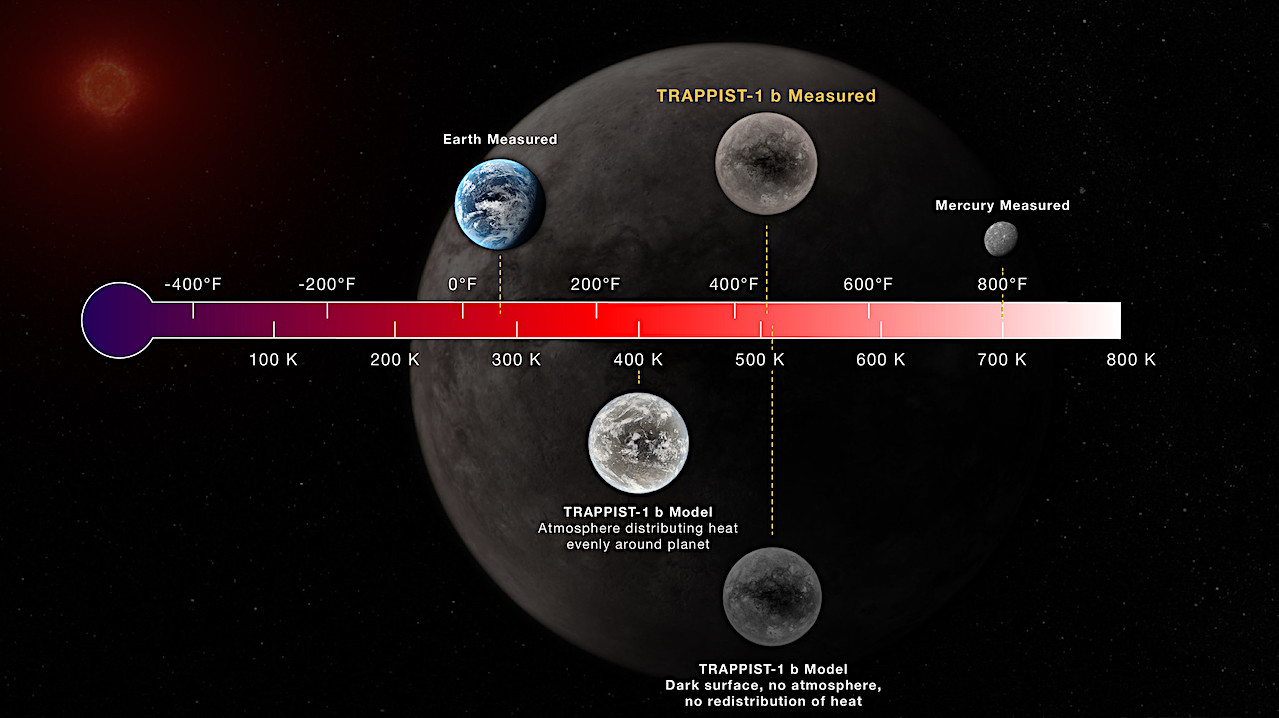James Webb Space Telescope Feed Post
Astrobiology | Webb Measures The Temperature Of Rocky Exoplanet TRAPPIST-1 b
Webb measured the dayside temperature of rocky exoplanet TRAPPIST-1 b and found it to be about 450 degrees F (227 degrees C), suggesting it has no significant atmosphere. This marks the first detection of any form of light — in this case, heat energy — emitted by a rocky planet that’s as small and cool as those in our solar system. As a refresher, TRAPPIST-1 b is the innermost of 7 rocky planets (found in 2017) orbiting the M dwarf star TRAPPIST-1. M dwarf stars are intriguing because they are 10 times as common and 2 times more likely to have rocky planets than stars like our Sun. These new Webb results give us important clues about TRAPPIST-1 b’s 3 siblings in the habitable zone (whose conditions could support liquid water on their surfaces) as well as other M-dwarf systems. It’s a key step to figuring out if planets around M-dwarf stars can sustain atmospheres needed to support life, with a promise of more science to come. Image description: Infographic titled, “Rocky Exoplanet TRAPPIST-1 b Dayside Temperature Comparison, MIRI F1500W” showing five planets plotted along a horizontal temperature scale: Earth, TRAPPIST-1 b, Mercury, and two different models of TRAPPIST-1 b. The temperature scale is labeled in kelvins and degrees Fahrenheit, and ranges from 0 kelvins (negative 459 degrees Fahrenheit) at the left to 800 kelvins (980 degrees Fahrenheit at the right). The planets are plotted along the temperature scale at the following temperatures: Earth Measured at 290 kelvins (60 degrees Fahrenheit); TRAPPIST-1 b Measured at about 500 kelvins and 445 degrees Fahrenheit; “Mercury Measured” at 700 kelvins (800 degrees Fahrenheit). TRAPPIST-1 b Model with atmosphere is plotted at 400 kelvins (260 degrees Fahrenheit); TRAPPIST-1 b Model with no atmosphere is plotted at about 510 kelvins and 455 degrees Fahrenheit. TRAPPIST-1 b Measured is plotted at almost the same temperature as TRAPPIST-1 b Model with no atmosphere. Read more at Astrobiology (click below).
